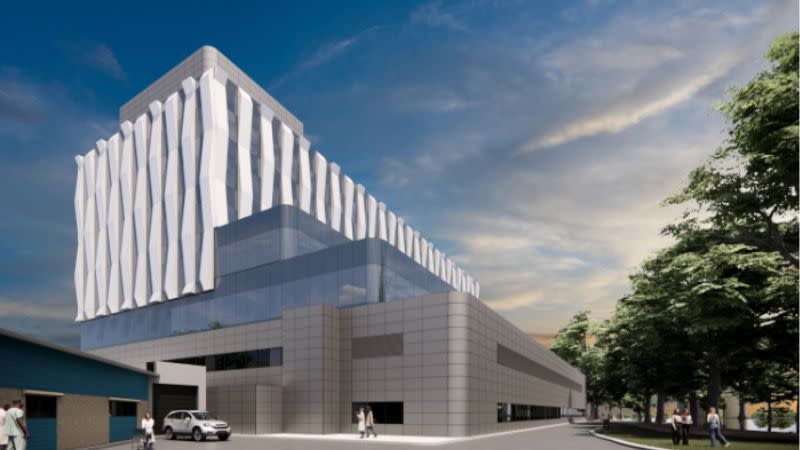WA Budget: What the Property Sector Needs to Know

Gold, iron ore and stamp duty will drive a seventh straight Budget surplus for Western Australia—Premier Roger Cook’s first; his treasurer Rita Saffioti’s second.
The Urban Developer has prepared a list of the elements of the WA 2025-26 Budget that will affect the property sector as the cashed-up state looks to spend not just on the cost of living but major projects.
Infrastructure
As with all other states, WA needs housing and, while there is an effort to build up, not out, much of the growth is following an urban sprawl around key growth areas.
Trunk infrastructure that can match the forecasted capacity and demand is key to the state’s plans.
The Budget has allocated $101 million through the Housing Enabling Infrastructure Fund (HEIF) to push through much-needed water and power infrastructure in metropolitan and regional areas.
It will unlock 33,000 new homes and build on the $105 million already announced to unlock 28,000 new homes.
“Housing supply remains a critical issue, and this investment will ensure we continue to prioritise strategic infrastructure needed to unlock more residential land throughout Western Australia,” Saffioti said.
“By addressing critical water and power infrastructure needs, informed by consultation with industry, we can unlock land in high-priority areas to deliver more homes and support sustainable development in our metropolitan growth corridors and regional communities.”
The HEIF now is worth $400 million and will fund 21 projects, including $59.6 million for 18 water and wastewater projects in Perth and Peel, and four projects at Busselton, Dalyellup, Kununurra and Margaret River.
There will also be $41.4 million for three Western Power substation feeders, at Muchea, Medina and Pinjarra.
Urban Development Institute of Australia WA chief executive Tanya Steinbeck welcomed the announcement.
“It is critical that infrastructure co-ordination, funding and delivery aligns with development pipeline intentions for undeveloped urban zoned land, and potential future urban land,” Steinbeck said.
“Proper co-ordination enables early planning and greater certainty for residential projects and more efficient delivery of much needed homes,” Steinbeck said.
Another $113.4 million will be used for addressing congestion on certain roads in Perth’s northern suburbs.

Housing
The Budget allocates $1.4 billion to several housing initiatives that includes the HEIF’s $101 million.
As well, $119 million has been earmarked to reduce transfer duty for first home buyers.
And the Housing Innovation Fund will have $50 million to support initiatives and technologies to boost housing supply-chain productivity.
There will be $246 million to deliver 548 social and affordable homes, $210 million for 1000 shared equity loans in new apartment and townhouse developments.
Build-to-rent developers will have $75 million for no and low-interest loans that will support affordable housing in such projects.
Modular housing is to get a leg-up with low-deposit construction loans funded under the Budget that will include enhanced progress payments. The move targets regional areas where this form of construction can overcome labour and cost issues.
The Community Housing Capability Program is to receive $6 million.
The GROH program will get $104 million to double it with more than 100 new builds in the regions and the Regional Housing Support Fund will get $25 million for regional housing projects.
The state will kick in $43 million to the part-Commonwealth funded Mulataga residential development at Karratha and a $3-million expansion of the Housing First Support Service to Bunbury and its surrounding areas.
Another $20 million has been set aside to construct up to 40 units for seniors in Kalgoorlie and $5 million to support key worker homes in Kununurra.
Industrial
The biggest ticket item in the Budget is $1 billion allocated to double the Strategic Industries Fund (SIF).
The fund is a commitment to push through the Made in WA scheme and will help support the Advanced Manufacturing and Technology Hub at Picton, as well as road infrastructure upgrades for Kemerton and Kwinana Strategic Industries Areas (SIAs).
The SIAs at the Pilbara, Mid West, Goldfields, South West and the Western Trade Coast are planned to become home to clean energy and major industrial projects and the SIF will help support development at several sites.
“With a state as big as Western Australia and so rich in resources, economic infrastructure is the key to unlocking new developments,” Saffioti said.
“These precincts will be the generator of future jobs for Western Australians across a range of industries, such as green iron, new energies, defence and downstream processing.”
The Budget includes $50 million to establish the Perth biomedical precinct and another $50 million for the Local Battery Manufacturing Program.
The Clean Energy Link–North and Regans Ford Terminal for wind generation will get $584 million with the plan to shut down coal-fire power stations by 2030.
Another $543 million will be spent to increase the Goldfields pipeline’s capacity by 7.2GL a day to drive economic growth.
Ports will get $349 million to grow export capacity, including Westport, Utah Point, Broome’s passenger cruise terminal, Wyndham, Derby and Albany.
There will also be $107 million to expand and activate the Hope Valley and Postans industrial areas at Kwinana.

Construction and training
The Budget includes $25.2 million to expand the Group Training Organisation (GTO) Wage Subsidy Program to help cover the cost of employing an apprentice or trainee in the construction industry.
It is expected to unlock an additional 225 places, funding 150 places at a 75 per cent subsidy and 75 places at a 100 per cent subsidy.
There is $12.3 million allocated to extend the Build a Life in WA incentive and Construction Visa Subsidy Program.
The former targets skilled Australian and New Zealand citizens and permanent residents while the latter helps skilled migrants.
The programs have attracted more than 1000 construction workers to WA. The Build a Life in WA Incentive provides up to $10,000 to each applicant.
“Our Budget commitment enables us to make a further 1100 places available from July 1, 2025, and I’m sure they will be snapped up,” Cook said.
“These successful programs clearly show the message is out—the West Coast is the best coast, and skilled tradies from overseas and the eastern states are voting with their work boots.”
The number of fee-free housing and construction TAFE courses will increased thanks to $22 million in funding, and $600,000 will go to help more tradies register as builders.
Planning
A review of the Residential Design Codes (R-Codes) for WA’s planning system to push more infill housing supply will be carried out under Budget funding.
R-Codes are key policy rules for guiding residential development with significant planning reform already completed to provide guidance for apartment development and medium density.
The Western Australian Planning Commission (WAPC) has been asked to look at how to modernise the existing planning framework and create a contemporary digitally enabled document for all stakeholders.
A stakeholder advisory will also be formed as part of the review.

Healthcare
The Budget includes $24 million for 60 new public beds at Joondalup Health Campus as part of the newly built public ward block.
The campus is being expanded through a public-private partnership between the WA Government and Ramsay Health Care.
South of the capital, $20.3 million had been earmarked for the Bunbury Regional Hospital redevelopment project, which already totals $471.5 million.
Health services will expands thanks to a $829 million allocation while another $10 million will be used to progress the planning for expanding the St John of God Midland and Royal Perth Hospital Emergency Departments.
That is part of a $3.2 billion investment in the sector over the next four years.













